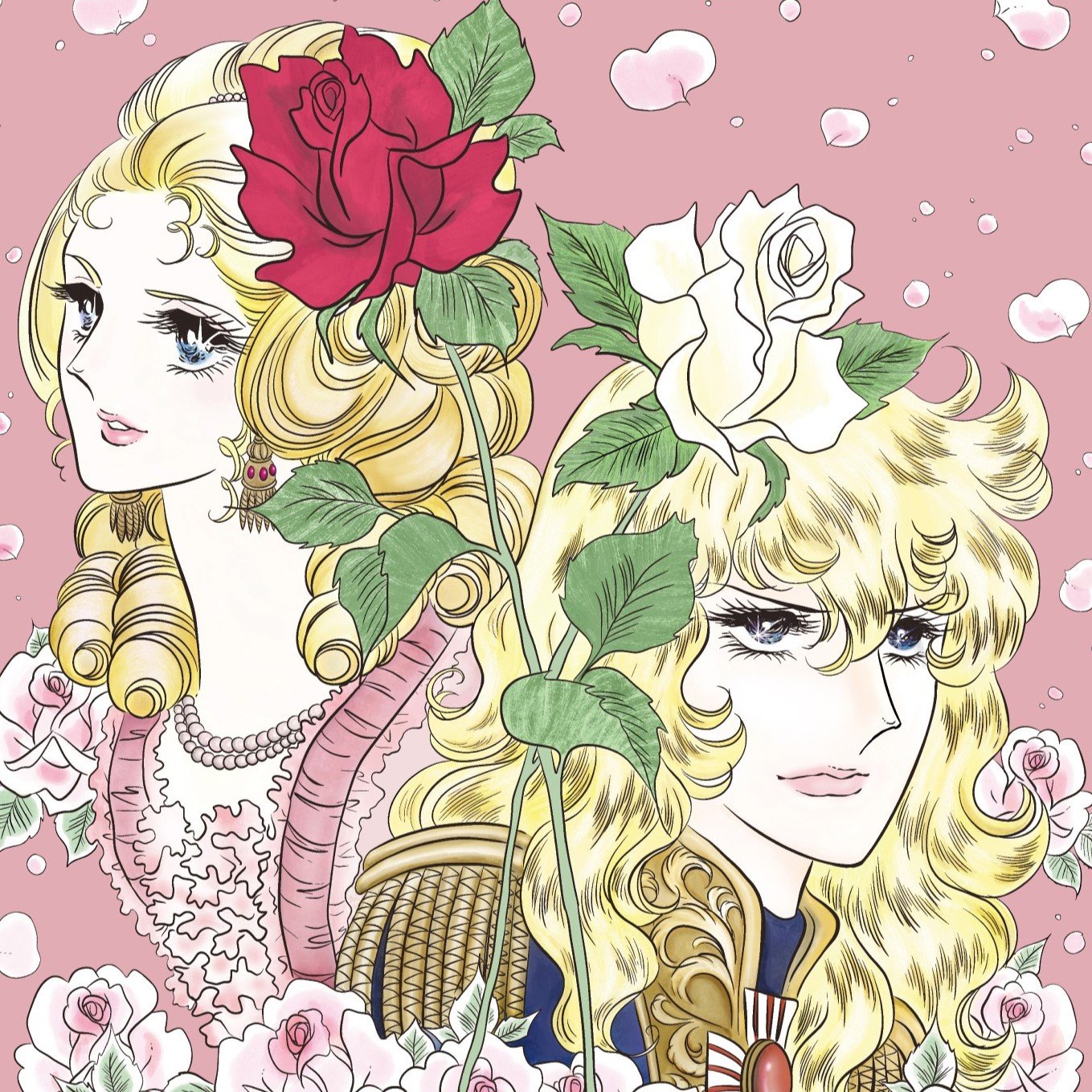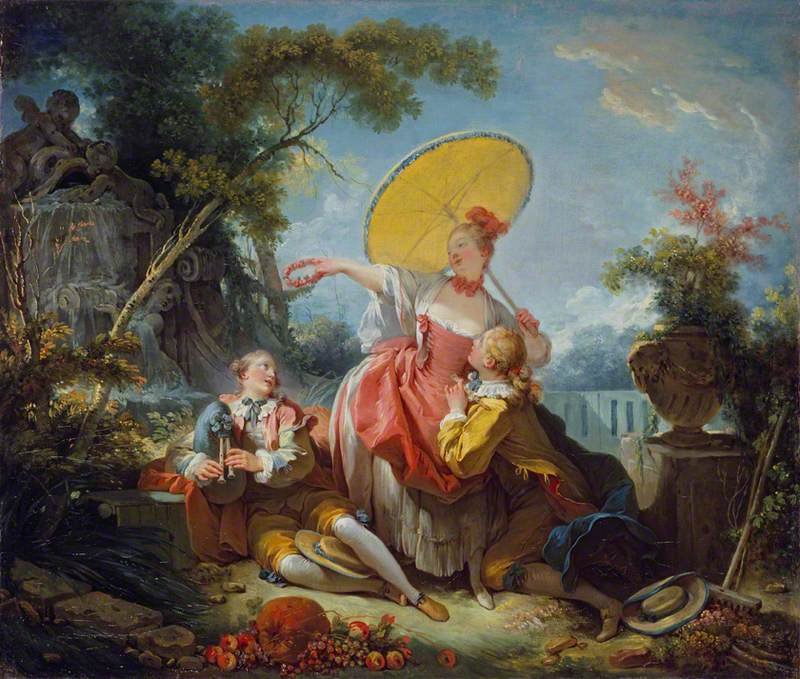Eliza Grace Needles
‘Delicate’ Subversion, Rococo and Resistance in The Rose of Versailles
This paper delves into the delicate intricacies between The Rose of Versailles manga, post-war femininity and feminism, and the aesthetics of Rococo paintings from the 18th century. With a particular focus on spaces adorned with girls’ aesthetics in shojo manga, the work will analyze the manner in which these aesthetics can be subtly used by women. It posits that The Rose of Versailles, written by Riyoko Ikeda primarily for a female audience, emerges as a significant site of feminine empowerment in the 1970s, intertwining ‘girls' aesthetics’ from shoujo manga with visual imagery historically associated with women in art. This study contends that works like The Rose of Versailles function as not only a defined space for woman to operate in, but also a point of substantive depth and cultural resonance. Drawing parallels with the historically overlooked significance of 18th century Rococo paintings, the paper illuminates how subtle artistic expression in shoujo manga serves as an act of resistance, empowering women who embrace them.
Through a comparative and contrastive lens, the research investigates the connections between The Rose of Versailles and Rococo paintings, exploring how their association with femininity purposefully shapes public perception and allows for meaningful resistance. The study employs a multidisciplinary approach, examining both the direct and historiographic evidence upon the subject. It further critically examines prevalent critiques directed at both forms of art and identifies shared visual motifs and thematic undercurrents that challenge dominant narratives of femininity and Rococo aesthetics. Through an in-depth exploration of specific examples within The Rose of Versailles and select Rococo paintings, the research explores how Rococo aesthetics are wielded to construct spaces of resistance, transcending mere aesthetic appeal to initiate and expand upon socio-cultural critique and transformation.
Jean-Honoré Fragonard, The Swing, 1767, Oil on Canvas "The Swing," an iconic Rococo painting by Fragonard from 1767, epitomizes the style's core characteristics. The lighting, color choice, and composition of the artwork establish a scene that is delicate, theatrical, and incorporates elements of scandal that were also common at the time. With a heavy emphasis on natural imagery and traditionally feminine themes, it aligns with general Rococo aesthetics and serves as a strong example to reference. This painting's visual elements resonate with many of those within The Rose of Versailles manga. Similar to numerous examples of 1970s shoujo manga, The Swing suggests a narrative unfolding illustrated with intricately detailed costumes, pastel colors, and natural props such as floral motifs. There is a strong implication of a story waiting to be told, similar to the narrative elements of the manga, and it retains a position as a fluid tale translatable to other mediums.
This is the cover of the original publication of The Rose of Versailles manga from 1979. It clearly illustrates the manner in which the main characters are depicted and establishes a precedent for the art that follows within the manga. The main character, Oscar Francois de Jarjayes, is characterized by her long, curled hair and delicately detailed soldier's uniform, echoes the typical features of Rococo fashion seen in 18th-century paintings. Marie Antoinette, the other leading female character, is shown to appear more traditionally feminine and yet distinctly whimsical, with large, sparkling eyes and an elaborate curled hairstyle. The floral motif and the pastel colors upon the cover draw an immediate visual connection to Rococo aesthetics.
Riyoko Ikeda, The Rose of Versailles, 1972Riyoko Ikeda, The Rose of VersaillesThis manga page from The Rose of Versailles serves as a strong illustration of the contrasting portrayals of its two principal female characters while simultaneously highlighting their visual connection to Rococo art. The resonance with the Rococo era is visually evident, particularly within the attire worn by the characters as the story is set in 18th century France. Marie Antoinette's outfit and portrayal mirrors the lavishness of Rococo paintings with its abundance of sparkles, ribbons, and styled arrangements. Within this scene, a critical dialogue unfolds exclusively between two women, revealing Oscar's pivotal role as a soldier. As she was given the training and upbringing traditionally reserved for sons by her father, Oscar holds a position similar to her male counterparts serving the royal court. This unique vantage point grants her the ability to traverse the realms of both genders within the court, offering valuable insights into the aristocratic lifestyle and the broader socio-political landscape of France during that era even though she is a woman.
Jean-Honoré Fragonard, The Musical Contest, 1754, Oil on Canvas The Music Contest by Jean-Honoré Fragonard not only exhibits visual similarities to the aesthetic motifs of The Rose of Versailles but also establishes distinct narrative resonance. In the middle of the composition of the painting stands a woman whose significance is central both within the physicality of the artwork and within the narrative it portrays. Positioned at the heart of the artwork, she symbolizes the focal point of the scene, depicted in the midst of choosing between two male suitors vying for her favor. Despite the desperate bids for attention from the men below, the woman retains an expression of serene contemplation, contrasting sharply with their ardent pursuit. The strength of her importance is emphasized by her parasol and its connecting reflection within the men’s clothing - an allegorical connection to the sun. This dynamic underscores her authoritative presence as the center of power within both the artwork and its depicted scenario, and connects to Oscar and Marie’s central position within The Rose of Versailles’ narrative.
Riyoko Ikeda, The Rose of VersaillesThis manga panel from The Rose of Versailles is a notable example of the portrayal of women within its narrative. Specifically, it accentuates the opulence of attire often worn by Marie Antoinette, drawing a strong parallel between Rococo art and shoujo manga. Carefully compiled layers of jewelry, striking ribbons, and formal hairstyles adorned with the natural element of flowers converge to present the resulting rich visual. Beyond mere aesthetics, this panel highlights the potential agency that can be gained through the manner by which a woman crafts her public presentation and subsequent perception. Drawing a historical parallel, it falls in the same vein as Madame de Pompadour's strategic use of portraiture to delicately assemble her public persona. This thoughtful series of action signifies a subtle yet potent form of resistance. The intersection in this aspect of the two art forms further showcases the latent power inherent within traditionally feminine spheres and even activities.
Eliza Grace Needles
(she/her)
Art History ‘24
A fourth-year undergraduate student at Temple University pursuing a B.A. in Art History with a Fine Arts minor. She has pursued year-long international study at both Temple University Japan and Temple University Rome, and is interested in international illustrated literature, Rococo art, and the intersection between art and feminist and queer theory.








